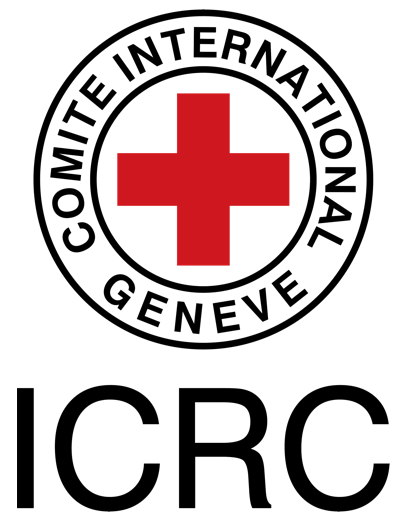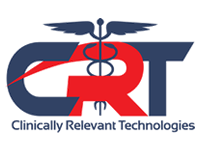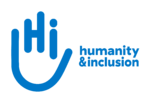Category:ReLAB-HS Course Page
Pages in this category have been developed as a collaboration between Physiopedia and the USAID funded Learning, Acting, and Building for Rehabilitation in Health Systems (ReLAB-HS).
Pages in category "ReLAB-HS Course Page"
The following 200 pages are in this category, out of 239 total.
(previous page) (next page)A
- A Task Oriented Approach to Assessment and Training of Infant Sitting
- Academic Faculty
- Access to Assistive Technology
- Access to Rehabilitation
- Activities for Training Infant Sitting
- Activities of Daily Living Performed by People with Spinal Cord Injury
- Adapting Communication to Different Populations
- Adaptive Seating for Children
- An Introduction to Augmentative and Alternative Communication
- An Overview of Rehabilitation for Doctors
- An Overview of Rehabilitation for Nurses
- Applying the ICF in Health Policies and Administration
- Appraising the Quality of Knowledge Resources
- Assessing Muscle Length
- Assessing Muscle Strength
- Assessing Range of Motion
- Assessment and Exercise Interventions in Early and Middle Childhood Development
- Assessment and Questionnaires for Children with Pain
- Assessment Before Moving and Handling
- Assessment Considerations in Disasters and Conflicts
- Assessment of Infection in Burn Injuries
- Assessment of Wound Infection
- Assistive Technology: Vision Products
- Autonomic Nervous System and Spinal Cord Injury
B
C
- Cardiovascular Training in Spinal Cord Injury
- Case Study - Acquired Brain Injury in Disasters and Conflicts
- Case Study - Amputation in Disasters and Conflicts
- Case Study - Burns in Disasters and Conflicts
- Case Study - Electrical Burn in Disasters and Conflicts
- Case Study - Fractures in Disasters and Conflict
- Case Study - Lower Limb Peripheral Nerve Injury in Disasters and Conflicts
- Case Study - Spinal Cord Injury in Disasters and Conflicts
- Case Study - Upper Limb Peripheral Nerve Injury in Disasters and Conflicts
- Cerebral Palsy Aetiology and Pathology
- Cerebral Palsy General Assessment
- Cerebral Palsy Interventions
- Challenges in Delivering Rehabilitation in Disasters and Conflicts
- Child Health Conditions and Migration
- Clinical Education Components
- Clinical Guidelines
- Communication in Early Intervention
- Complications in Assessment and Treatment in Disasters and Conflicts
- Conceptual Models of Disability and Functioning
- Considerations For Working With Displaced Children
- Considerations for Working with LGBTQIA+ Displaced Persons
- Considerations for Working with Survivors of Sexual Violence
- Creating New Habits for Learning
- Curriculum Components
D
- Defining the Evidence Based Practice Decision-Making Model
- Developing Physically Active and Sporty Kids - Benefits and Barriers
- Developing Physically Active and Sporty Kids - Injuries Specific to Children and Teenagers
- Developing Physically Active and Sporty Kids - Overuse Injuries and Burnout
- Development of Sitting
- Development Skills Training for the 1-2 month old
- Developmental Disabilities in Early and Middle Childhood
- Diabetic Rehabilitation
- Displaced Persons: The Global Context
- Displaced Persons: The Syrian Context
- Dressing Aids
E
- Early Development of Toddler Walking and Other Locomotor Tasks
- Eating and Drinking Assistive Products
- Emergency Medical Teams in Disasters and Conflicts
- Ethics in Disasters and Conflicts
- Evidence Based Assessment of Pain in Displaced Persons
- Evidence Based Practice and Patient Needs
- Evidence-based Management of Pain in Displaced Persons
F
H
- Hand Function 0-7 months
- Hand Function 7-24 Month Period
- Hand Function Assessment and Training
- Health Care Systems
- High Functioning Cerebral Palsy Physiotherapy Assessment and Intervention
- Holistic Healthcare Interventions for Children
- Home Modifications for People with Spinal Cord Injury
- How to Focus for Learning
- How to Improve Your Reading for Understanding
- How to Improve Your Writing Skills
- How to Manage Your Time for Learning
- How to Remember What You Learn
- How to Take Care of Yourself to Improve Learning
- How to Take Notes for Learning
I
- ICF and Application in Clinical Practice
- ICF Educational and Clinical Resources
- ICF Model and Goal Writing in Paediatrics
- ICF-CY International Classification of Functioning, Disability and Health Children and Youth Version
- Implementation Science
- Implementation Science: Evaluation Stage
- Implementation Science: Implementation Stage
- Implementation Science: Pre-Implementation Stage
- Implementation Science: Sustainment Stage
- Infant Development in Prone
- Infant Development in Supine
- Injury Patterns in Conflict Settings
- Integrative Approaches for Pelvic Pain in Trauma Recovery
- International Classification of Functioning, Disability and Health (ICF)
- Introduction and Overview of Evidence Based Practice
- Introduction to Basic Rehabilitation Techniques
- Introduction to Burns
- Introduction to Cerebral Visual Impairment and Cerebral Palsy
- Introduction to Clinical Reasoning
- Introduction to Complex Orthoses
- Introduction to Gait Rehabilitation in Spinal Cord Injury
- Introduction to Gender Equality and Social Inclusion (GESI)
- Introduction to Mentorship
- Introduction to Orthotics
- Introduction to Paediatric Physiotherapy
- Introduction to Rehabilitation
- Introduction to Spinal Cord Injury
- Introduction to Spinal Orthotics
- Introduction to the International Classification of Functioning, Disability and Health (ICF)
L
M
- Maintaining Professional Standards in Disasters and Conflicts
- Mental Health Considerations With Cerebral Palsy
- Mission and Vision of the Organisation
- Mobile Phone Use in Disaster, Conflict and Displacement
- Modern Lifestyles and Classroom Ethos in Early and Middle Childhood Development
- Modes of Communication
- Muscle Activity During Gait
O
P
- Pain Neuroscience Education for Children
- Perceptual-Motor Abilities of Infants in the 1 to 2 Month Period
- Physical Activity Guidelines for Spinal Cord Injury
- Physical Activity in Individuals with Disabilities
- Physical Activity Promotion for People with Spinal Cord Injury
- Physiology and Healing in Sport
- Physiotherapy for Survivors of Sexual Violence
- Positioning
- Positioning and General Management of Upper Limbs in Spinal Cord Injury
- Principles of Confidentiality
- Principles of Documentation
- Principles of Rehabilitation
- Professional Behaviours in Thinking and Communication
- Professional Educational Philosophy
- Professional Roles in Mental Health and Cerebral Palsy
- Professionalism in Healthcare
- Programme of Study: Assessment of Alignment with Policies and Procedures for Academic Programmes
- Programme of Study: Assessment of the Admissions Enrollment Processes
- Programme of Study: Rehabilitation Curriculum Assessment
- Programme of Study: Strategic Assessment Plan
- Protecting the Vulnerable in Disasters and Conflicts
R
- Rehabilitation Contexts
- Rehabilitation Curriculum Planning Process
- Rehabilitation During a Pandemic in People with Specific Rehabilitation Needs
- Rehabilitation for Survivors of Torture
- Rehabilitation for Survivors of Torture: Observations from Humanity and Inclusion
- Rehabilitation Frameworks
- Rehabilitation Global Needs
- Rehabilitation Governance
- Rehabilitation Interventions
- Rehabilitation Interventions Case Study
- Rehabilitation of Acquired Brain Injury in Disasters and Conflicts
- Rehabilitation of Amputations in Disasters and Conflicts
- Rehabilitation of Burns in Disasters and Conflicts
- Rehabilitation of Fractures in Disasters and Conflicts
- Rehabilitation of Spinal Cord Injury in Disasters and Conflicts
- Rehabilitation Phases
- Rehabilitation Settings
- Rehabilitation Team Members
- Rehabilitation Teams
- Rehabilitation, Sustainable Development Goals and Inclusion
- Respiratory Management in Spinal Cord Injury
- Role of Audiologist in a Rehabilitation Team
- Role of Community Health Worker in a Rehabilitation Team
- Role of Dietician in a Rehabilitation Team
- Role of Nurse in a Rehabilitation Team
- Role of Occupational Therapist in a Rehabilitation Team
- Role of Optician, Optometrist and Ophthalmologist in a Rehabilitation Team
- Role of Peer Support Worker in a Rehabilitation Team
- Role of Physician in a Rehabilitation Team
- Role of Physiotherapist in a Rehabilitation Team
- Role of Podiatrist in a Rehabilitation Team
- Role of Prosthetists and Orthotists in a Rehabilitation Team
- Role of Psychologist in a Rehabilitation Team
- Role of Rehabilitation Professionals in Camps for Displaced Persons
- Role of Rehabilitation Professionals in Early Rehabilitation in Disasters and Conflicts
- Role of Social Worker in a Rehabilitation Team
- Role of Speech and Language Therapist in a Rehabilitation Team
- Role of Telehealth in Disasters and Conflicts






